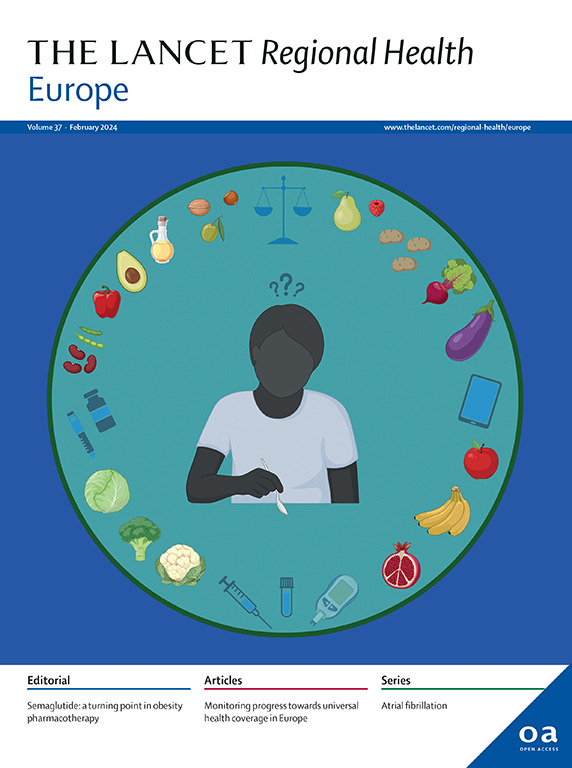Early-life growth and emotional, behavior and cognitive outcomes in childhood and adolescence in the EU child cohort network: individual participant data meta-analysis of over 109,000 individuals
IF 13.6
Q1 HEALTH CARE SCIENCES & SERVICES
引用次数: 0
Abstract
Background
Fetal and infant development might be critical for cognitive outcomes and psychopathology later in life. We assessed the associations of birth characteristics and early life growth with behavior and cognitive outcomes from childhood to adolescence.
Methods
We used harmonized data of 109,481 children from 8 European birth cohorts. Birth weight, gestational age, and body mass index (BMI) tertiles at the age of 2 years were used as the exposure variables. Outcomes included internalizing and externalizing problems and attention-deficit hyperactivity disorder (ADHD), autism spectrum disorder (ASD), and non-verbal intelligence quotient (Non-verbal IQ) in childhood (4–10 years), early adolescence (11–16 years), and late adolescence (17–20 years). We used 1-stage individual participant data meta-analyses using generalized linear models.
Findings
A one-week older gestational age was associated with lower scores for internalizing problems (difference −0·48 (95% CI: −0·59, −0·37)), externalizing problems (difference −0·34 (95% CI: −0·44, −0·23)), and ADHD symptoms (difference −0·38 (95% CI: −0·49, −0·27)), and with higher scores for non-verbal IQ (difference 0·65 (95% CI: 0·41, 0·89)). As compared to term birth, preterm birth was associated with higher internalizing problems (difference 3·43 (95% CI: 2·52, 4·33)) and externalizing problems (difference 2·31 (95% CI: 1·16, 3·46)), ADHD symptoms (difference 4·15 (95% CI: 3·15, 5·16)), ASD symptoms (difference 3·23 (95% CI: 0·37, 6·08)), and lower non-verbal IQ (difference −5·44 (95% CI: −7·44, −3·44)). Small size for gestational age at birth (SGA) in comparison with appropriate size for gestational age (AGA) was associated with higher ADHD symptoms (difference 4·88 (95% CI: 3·87, 5·90)) and lower Non-verbal IQ (difference −7·02 (95% CI: −8·84, −5·21)). Large size for gestational age at birth was associated with lower ADHD symptoms (difference −1·09 (95% CI: −1·73, 0·45)) and higher non-verbal IQ (difference 2·47 (95% CI: 0·77, 4·18)). Explorative analyses showed that as compared to children with an appropriate size for gestational age at birth and a normal BMI at the age of 2 years, children born SGA who remained small at 2 years had the lowest non-verbal IQ score (difference −8·14 percentiles (95% CI: −11·89, −4·39)).
Interpretation
Both fetal and early childhood growth are associated with emotional, behavioral and cognitive outcomes throughout childhood and adolescence. Compensatory infant growth might partly attenuate the adverse effects of suboptimal fetal growth. Future studies are needed to identify the potential for optimizing mental health outcomes in new generations by improving early-life growth.
Funding
This project received funding from the European Union's Horizon 2020 research and innovation programme (LIFECYCLE, grant agreement No 733206, 2016; EUCAN-Connect grant agreement No 824989; ATHLETE, grant agreement No 874583).
求助全文
约1分钟内获得全文
求助全文
来源期刊

Lancet Regional Health-Europe
Multiple-
CiteScore
19.90
自引率
1.40%
发文量
260
审稿时长
9 weeks
期刊介绍:
The Lancet Regional Health – Europe, a gold open access journal, is part of The Lancet's global effort to promote healthcare quality and accessibility worldwide. It focuses on advancing clinical practice and health policy in the European region to enhance health outcomes. The journal publishes high-quality original research advocating changes in clinical practice and health policy. It also includes reviews, commentaries, and opinion pieces on regional health topics, such as infection and disease prevention, healthy aging, and reducing health disparities.
 求助内容:
求助内容: 应助结果提醒方式:
应助结果提醒方式:


